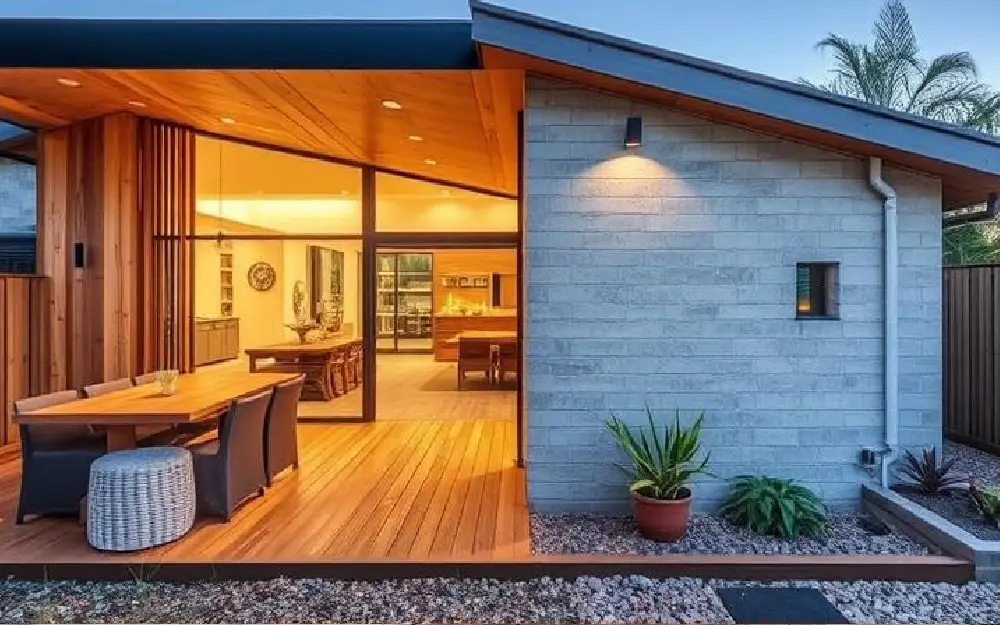
Building Homes with Reclaimed Materials: Benefits and Challenges
Building a home is one of life’s biggest projects, but have you ever thought about using reclaimed materials in the process? Reclaimed materials are items salvaged from old buildings, factories, or even demolition sites, and they can be a sustainable and cost-effective choice when building your dream home. While there are many advantages to using reclaimed materials, there are also a few challenges to keep in mind.
Here’s a look at the benefits and challenges of building homes with reclaimed materials.
Benefits of Using Reclaimed Materials
- Environmental Sustainability
One of the main benefits of using reclaimed materials is their positive impact on the environment. By reusing old materials, you reduce the need for new resources, which can help lower the demand for raw materials and reduce waste. This also helps conserve forests, reduces energy consumption, and lowers greenhouse gas emissions. It’s a win for the planet! - Unique Aesthetic and Character
Reclaimed materials can add a unique charm to your home. Old timber, brick, or metal pieces often have a beautiful, weathered look that’s hard to replicate with new materials. Each piece of reclaimed wood, for example, might have a history or story behind it, making it a focal point in your home and giving your space a one-of-a-kind feel. - Cost-Effective
While some reclaimed materials can be pricey, they often cost less than new materials. If you’re able to find high-quality reclaimed wood, bricks, or metal, you could save money, especially if you source them from demolition sites or salvage yards. This can allow you to allocate your budget toward other aspects of your home, such as energy-efficient features or more expensive finishes. - Preserving History
By using reclaimed materials, you’re preserving pieces of history. Items from old barns, factories, and houses carry a sense of history and craftsmanship that can be cherished for generations. This can be especially meaningful if you’re using materials from historical buildings or sites, contributing to the preservation of your community’s heritage.
Challenges of Using Reclaimed Materials
- Quality and Durability
While reclaimed materials can be beautiful and unique, they might not always be in perfect condition. Old wood, for instance, can have cracks, termites, or damage from weathering. It’s important to carefully inspect reclaimed materials before using them in your home. This might require additional work like sanding, repairing, or treating the materials, which could take more time and effort compared to using new, high-quality materials. - Limited Availability
Finding the right reclaimed materials for your project can sometimes be tricky. Depending on where you live, there may not be many sources of reclaimed materials, or the materials you want might not be available in the quantities you need. You might have to spend a lot of time hunting for specific pieces, which could delay your project. Additionally, if you find materials you like, there’s no guarantee that you can find enough for the entire build. - Building Codes and Regulations
Reclaimed materials may not always meet modern building codes or safety standards. Local building regulations could require you to use new materials, or you may need to have reclaimed items inspected and treated to ensure they are safe and structurally sound. This could add complexity and cost to the building process. - Labor and Preparation
Reclaimed materials often require more work to prepare than new ones. You might need to clean, strip, or treat the materials to remove nails, stains, or old finishes. The time and labor involved in preparing reclaimed materials can increase the overall cost and time required for your home project.
How to Overcome the Challenges
- Work with Professionals: Partnering with builders, designers, or contractors who have experience working with reclaimed materials can help you avoid potential pitfalls. They can help you choose high-quality materials, prepare them correctly, and ensure they meet safety standards.
- Source Wisely: When searching for reclaimed materials, choose a reputable salvage yard or dealer. You can also explore local demolition sites or auctions for materials. Take your time to find the right pieces, and make sure they are in good condition before committing to them.
- Inspect and Treat Materials: Be sure to inspect any reclaimed materials for signs of damage, pests, or structural issues. Many reclaimed materials, especially wood, should be treated to remove any pests or mold before they are used in your home.
Conclusion
Building with reclaimed materials can be a rewarding choice for your home. The environmental, aesthetic, and financial benefits make it an appealing option for homeowners who want to make a sustainable, unique, and cost-effective choice. However, it’s important to be aware of the challenges, such as finding high-quality materials, ensuring safety, and complying with building codes.
With the right preparation and the help of experienced professionals, you can turn reclaimed materials into the foundation of a beautiful, eco-friendly home that stands the test of time. So, if you’re considering a new build or renovation, consider giving reclaimed materials a second life and add something truly special to your home!
